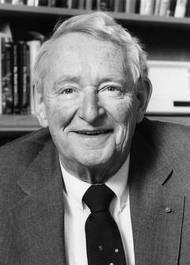Edward P. Ney
| Edward P. Ney | |
|---|---|

Photo provided by Frank B. McDonald
|
|
| Born | October 28, 1920 Minneapolis, Minnesota |
| Died | July 9, 1996 (aged 76) Minneapolis, MN |
| Nationality | American |
| Fields |
Physics Astronomy |
| Institutions | University of MinnesotaUniversity of Virginia |
| Alma mater | University of Virginia |
| Doctoral advisor | Jesse Beams |
| Doctoral students |
Phyllis S. Freier John D. Linsley Frank B. McDonald |
Edward Purdy Ney (October 28, 1920 – July 9, 1996) was an American physicist who made major contributions to cosmic ray research, atmospheric physics, heliophysics, and infrared astronomy. He was a discoverer of cosmic ray heavy nuclei and of solar proton events. He pioneered the use of high altitude balloons for scientific investigations and helped to develop procedures and equipment that underlie modern scientific ballooning. He was one of the first researchers to put experiments aboard spacecraft.
In 1963, Ney became one of the first infrared astronomers. He founded O'Brien Observatory, where he and his colleagues discovered that certain stars are surrounded by grains of carbon and silicate minerals and established that these grains, from which planets are formed, are ubiquitous in circumstellar winds and regions of star formation.
Ney's father, Otto Fred Ney and mother, Jessamine Purdy Ney, lived in Waukon, Iowa. However, in October 1920, his mother went to Minneapolis, Minnesota, where Ney was delivered by Caesarean section. After elementary school, he attended Waukon High School, where he developed an interest in science and mathematics that was encouraged by Coach Howard B. Moffitt, who taught several of his courses and later became an administrator at the University of Iowa.
In 1938, Ney began undergraduate studies at the University of Minnesota, where he became acquainted with Professor Alfred O. C. Nier, who was an expert in mass spectrometry. Soon, Nier recruited him to work in the spectroscopy laboratory for 35 cents per hour. In February 1940, Nier prepared a tiny but pure sample of Uranium-235, which he mailed to Columbia University, where John R. Dunning and his team proved that this isotope was responsible for nuclear fission, rather than the more abundant Uranium-238. This finding was a crucial step in the development of the atomic bomb. That summer, Ney and Robert Thompson prepared a larger sample of Uranium-235, which provided material for further important tests. Later, he helped Nier design and test mass spectrographs that were replicated for extensive use in the Manhattan Project.
...
Wikipedia
